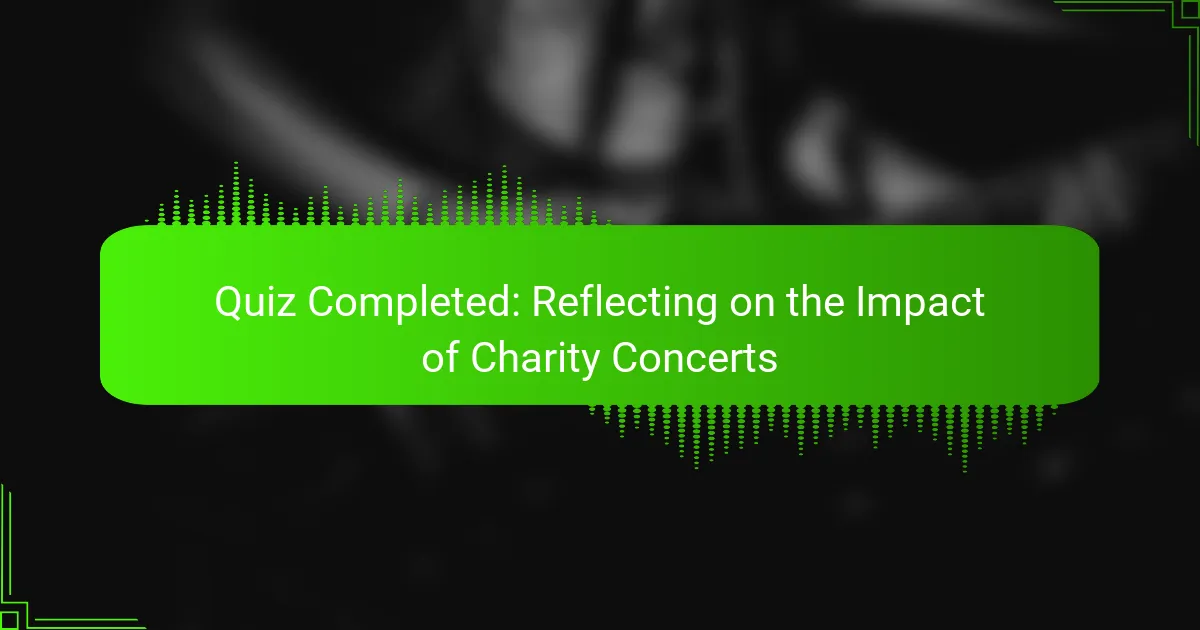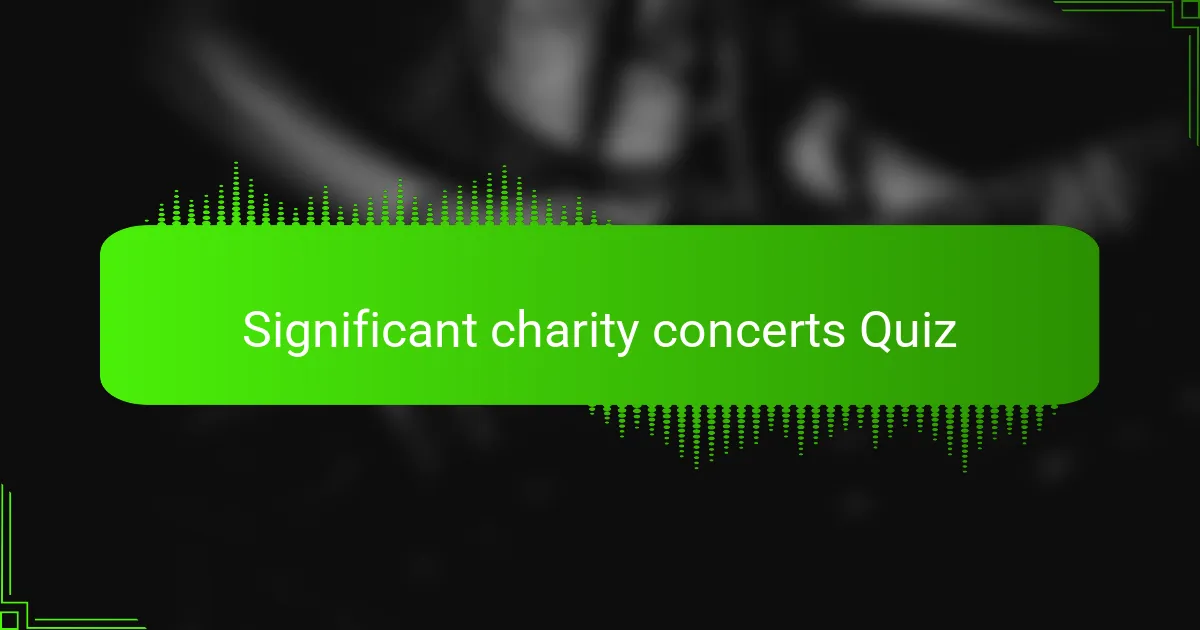
Quiz Completed: Reflecting on the Impact of Charity Concerts
Congratulations on completing our quiz on significant charity concerts! We hope you found it both enjoyable and enlightening. These monumental events not only showcase incredible musical talent but also unite artists and fans for a greater cause. Through this quiz, you may have discovered the power of music in driving social change and the heartfelt stories behind many of these performances.
From Live Aid to the Concert for Bangladesh, each concert carries a unique narrative of compassion and collective action. You’ve learned about the artists who stepped up, the causes they supported, and the lasting legacies these events have created. It’s inspiring to see how music can transcend borders and mobilize communities to make a difference.
We invite you to continue your exploration of this impactful topic. Check out the next section on this page dedicated to significant charity concerts. Here, you’ll find in-depth articles and resources that delve deeper into the history, notable artists, and the profound effects these concerts have had on global issues. Let’s keep the conversation going and celebrate the unifying force of music!

Significant charity concerts
Historical Overview of Charity Concerts
Charity concerts have been a significant part of the music industry since the 20th century. These events unite artists for a common cause, raising funds and awareness for various humanitarian issues. Notable examples include the Concert for Bangladesh in 1971, organized by George Harrison and Ravi Shankar, which raised over $240,000 for refugees. Such concerts set a precedent, demonstrating the power of music to effect change and mobilize support on a global scale.
Major Charity Concerts That Shaped the Music Industry
Several charity concerts have left an indelible mark on both the music industry and humanitarian efforts. Live Aid, held in 1985, is one such event, featuring artists like Queen and U2. It raised more than $125 million for famine relief in Ethiopia. Similarly, the 2001 Concert for New York City showcased performances by Bruce Springsteen and Paul McCartney, aiding victims of the September 11 attacks. These concerts highlight the synergy between music and philanthropy.
Impactful Charity Concerts in Recent Years
In recent years, charity concerts continue to address pressing global issues. Events like the One Love Manchester concert in 2017, featuring Ariana Grande and Coldplay, raised funds for victims of the Manchester Arena bombing. The concert drew over 50,000 attendees and raised more than $13 million. Such modern events reflect current social challenges, using star power to mobilize rapid financial support and public awareness for diverse causes.
Notable Artists Known for Charity Work
Many artists have become synonymous with charity work. Bono, the lead singer of U2, is a prominent activist involved in campaigns like DATA (Debt, AIDS, Trade, Africa). Similarly, Taylor Swift has participated in various charity concerts, supporting causes ranging from education to disaster relief. These artists leverage their influence and platform, encouraging fans to engage in philanthropic efforts through music.
The Future of Charity Concerts in the Digital Age
As technology evolves, the format of charity concerts is also changing. Virtual events have gained traction, especially during the COVID-19 pandemic. The Global Citizen Live event in 2021 featured artists like Ed Sheeran and Billie Eilish in a worldwide concert aimed at tackling climate change and promoting vaccination. This shift towards online engagement allows for broader accessibility and participation, highlighting the adaptability of charity efforts in the music industry.
What are significant charity concerts?
Significant charity concerts are large-scale musical events organized to raise funds and awareness for specific charitable causes. These concerts often feature popular artists and bands, drawing wide audiences. Notable examples include Live Aid in 1985, which raised over $125 million for famine relief in Ethiopia, and the Concert for New York City in 2001, aimed at supporting victims of the September 11 attacks.
How do significant charity concerts impact fundraising?
Significant charity concerts can significantly boost fundraising efforts through ticket sales, merchandise, and donations during the event. For instance, the Global Citizen Festival has raised over $1.3 billion for various global initiatives since its inception in 2012. The combined draw of celebrity performances and social media promotion also amplifies outreach, encouraging larger donations from attendees and online viewers alike.
Where have major charity concerts been held?
Major charity concerts have taken place in various iconic locations around the world. Live Aid was primarily held at Wembley Stadium in London and John F. Kennedy Stadium in Philadelphia. Similarly, the One Love Manchester concert, held at the Emirates Old Trafford in Manchester, raised funds for victims of the Manchester Arena attack. These venues enhance visibility and accessibility for diverse audiences.
When did the trend of charity concerts begin?
The trend of charity concerts began receiving significant attention in the 1980s. The Live Aid concert in 1985 is widely considered a pivotal moment in this movement. This event not only sparked further charity concerts but also raised global awareness about humanitarian issues, influencing the format of future events aimed at addressing social causes.
Who are some notable artists involved in charity concerts?
Many notable artists have participated in charity concerts. Famous figures like Bob Geldof and Midge Ure organized Live Aid, while artists such as Madonna, U2, and Elton John have performed at key events. More recently, Taylor Swift and Ed Sheeran have been involved in the Global Citizen initiative, showcasing how artists continue to play a crucial role in philanthropy through music.

